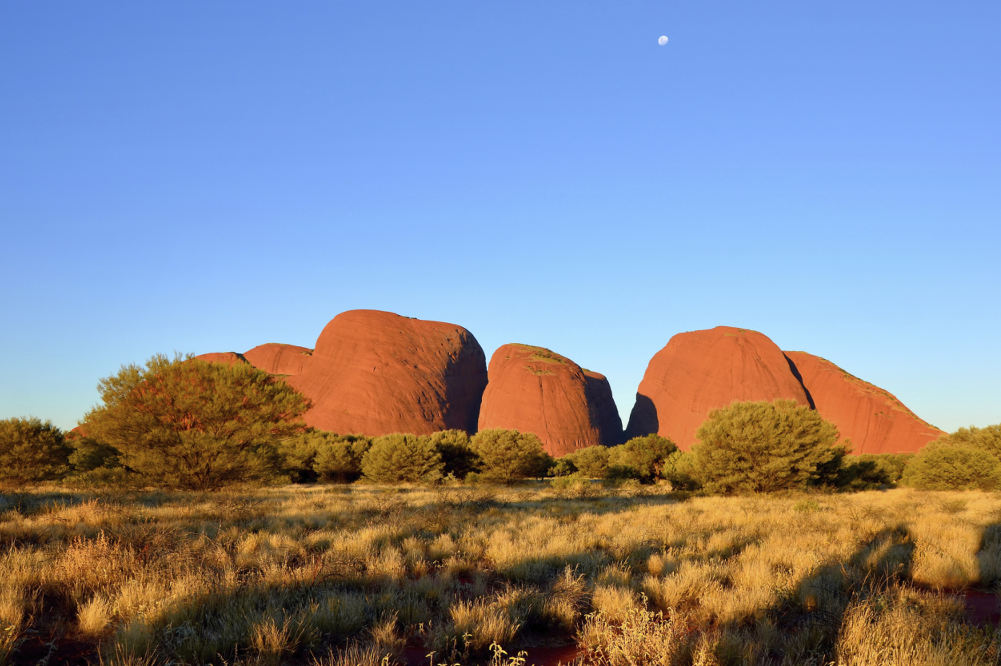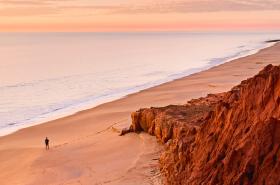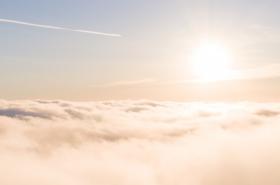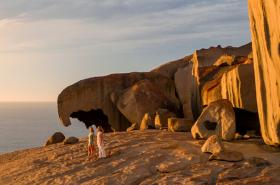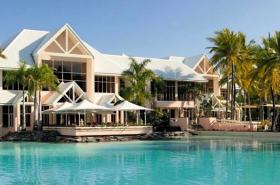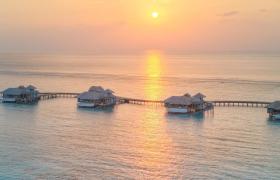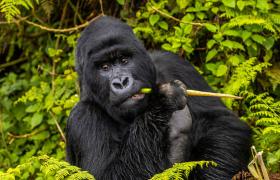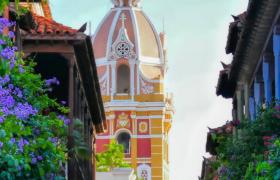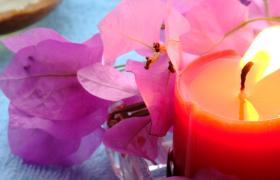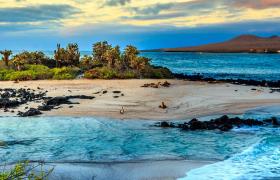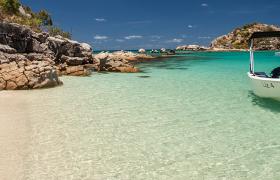When you’re somewhere as remote as Australia’s Outback, 'over there' can mean a three-day drive to the state border. But when you’re standing in front of the region’s now famous spiritual icon, Uluru, 'over there' could easily refer to the silhouette of remarkable proportions just 25 kilometres to the east.
Bigger, wider and taller than Uluru, Kata Tjuta in the country's Red Centre is a spectacular collection of 36 enormous rocks. It’s also, arguably, one of Australia’s best-kept secrets, barely talked about among most Australians, let alone the world. Even today, pre-planned itineraries to Uluru rarely take in this magnificent sight.
“There’s a general lack of awareness in Australia about Kata Tjuta,” conceded Andrew Williams, CEO of Voyages Indigenous Tourism Australia, which operates Ayers Rock Resort, the area’s sole resort. “You only have to look at the number of tours heading to Uluru versus the handful that visit Kata Tjuta to get an idea of demand. For many, even most Australians, it’s just not on the radar.”
In part, it’s the sheer unlikeliness of Kata Tjuta’s existence that makes this natural masterpiece so extraordinary. Like Uluru, Kata Tjuta is made of rusting rock but the latter is a series of several domes, rather than one massif, that rise unbidden from the flat, red surrounds, an oversized collection of marbles balancing on top at improbable angles.
And they really are oversized. Uluru might be taller than the Eiffel Tower, but Kata Tjuta towers another 200 metres higher than that; it would dwarf even New York City’s Empire State Building. In Pitjantjatjara, the language of the local indigenous Anangu community, Kata Tjuta means 'many heads', and so they seem, crowded together like giant, sleepy children, their magnificent tops dusted with minuscule, feathery-golden trees.
Captivated by the land Down Under? World Heritage Sites To Visit In Australia
Trek a different Aussie landscape: Take A Hike In Tasmania
Men's business
The other reason for Kata Tjuta’s exceptionality is that, to the Anangu, Kata Tjuta is a place of particular cultural significance – so much so that the domes have the rare distinction of having dual World Heritage status, for their indigenous heritage and their natural beauty. And even though it is an exceptionally stunning place, the site is so sacred that almost all forms of close-up photography and videography have been banned.
The Anangu are notoriously quiet about their cultural practices and Kata Tjuta is known as a place of 'men’s business'. If detailed photographs of the site were to be published, they might be seen by uninitiated young men, or by women, which would be considered highly inappropriate.
So while outsiders are welcome to visit, no one can broadcast the experience with the world. No wonder it’s still a secret.
It was pre-dawn when we left our hotel to make the journey to Kata Tjuta. The first stop was to Uluru-Kata Tjuta National Park's sunrise dune viewing platform, from which we watched in silent awe as the Outback’s lesser-known domes were seemingly lit from within with a slow, rose-coloured light.
Though it’s just another 18 kilometres to Kata Tjuta’s entrance, this is the closest that many visitors get to experiencing its wonders. And though it was a remarkable sight – a mountainous Morse code of dots and dashes directly in front of us, the silhouette of Uluru glimmering silently to our right – it was nothing compared with a face-to-face encounter.
Unearthly landscape
Walking through Kata Tjuta has been compared to what a walk through Uluru might be like if you sliced the giant rock in half – and the site’s most popular walking track, a 2.6-kilometre roundtrip into Walpa Gorge, certainly felt that way. The easy stroll between two of the largest domes offered a breathtaking sense of scale, with the reward of a beautiful riverbed and small oasis of green at its end.
Even more impressive was the eight-kilometre Valley of the Winds hike, which takes you around, between and behind a dozen more domes, through a landscape seemingly not from this Earth. The day was warming up as we started walking, disturbing groups of tiny birds that lifted into mad, twittering flight above.
We passed giant, popcorn-shaped pieces of ochre-coloured rock, as big as lounge-room furniture, which lay scattered like confetti on the valley floor. Corresponding holes in the fortress-like walls of the domes above told the story of their origins.
Every shade and texture of ochre, crimson, maroon, rust and slate could be found on the rock walls; the valleys between them filled with soft grey gums, shining emerald shrubs and the pale-green fuzz of spinifex. Hazy purple clouds puffed slowly through the sky above.
With mobs of shy, shimmering grey euro wallaroos (similar to kangaroos but smaller) and a semi-permanent, silvery creek completing the scene, the overall impression was of a psychedelic otherworld. Surely, if Uluru is the Cinderella of the Outback, then this is Alice’s Wonderland.
Respect for indigenous knowledge
Unlike her famous sister, there is virtually no man-made imposition to be seen at Kata Tjuta: no boardwalks, no handrails, almost no signage. This makes it easier to picture how the Anangu lived before European settlement, even though little is known about Kata Tjuta’s place in indigenous life.
“It’s not for us to know,” confirmed Jennie Nowell, a visitor service officer at Uluru-Kata Tjuta National Park. “But we’re talking about one of the oldest living cultures in the world, so I think we have an obligation to be mindful and respectful of their decision to share, or not share, their knowledge.”
I took a moment to look at the dove-grey tree trunks, the smoky blue shimmer of the gum leaves, the gentle, silent majesty of the domes above us.
"It's very different to Uluru, in every aspect," Nowell reflected. "I always tell people when they visit to just stop and take a moment to look at what's around them – no walking, no taking photos, no moving around. It's very special. There's no denying that Kata Tjuta is a one off."
Book your next dream holiday with Travel Associates
This article was written by Robin Forsaith from BBC and was legally licensed through the NewsCred publisher network.

